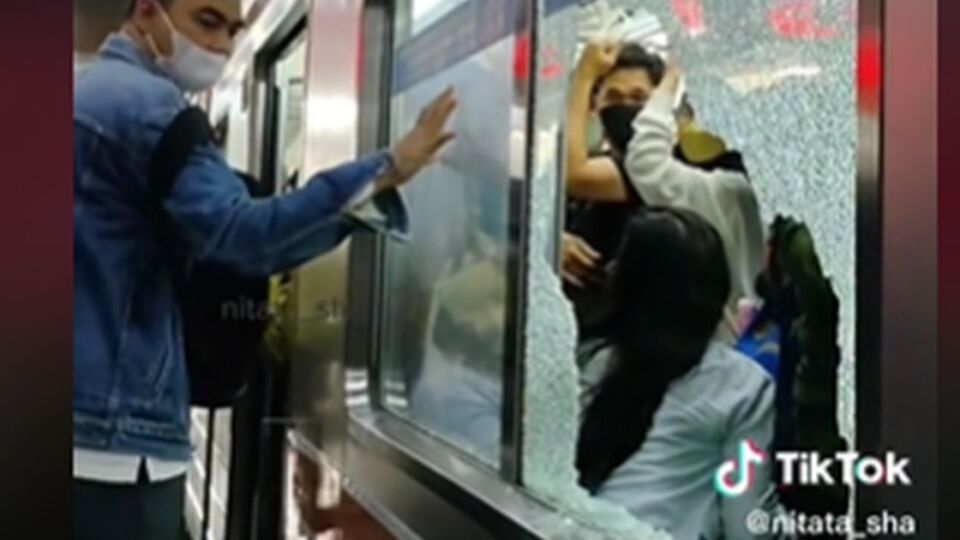Superpowers don’t seem to be at play here — a video of a KRL Commuterline train window shattering at a touch went viral recently, at a time when questions are being asked about the longevity of the company’s trains.
The video, posted by TikTok user @nitata_sha on March 2, begins with her showing the morning rush hour congestion at Manggarai Station and in a train headed for Angke. A man in a denim jacket was walking along the edge of the crowded platform and was slightly leaning with his hand onto the train’s window for balance, causing it to shatter.
@nitata_sha stasiun manggarai kaca pecah @kai121_ #manggarai #krlcommuterline ♬ suara asli – Sayangnya Lee Taeyong – Sayangnya Park Jimin
From the footage, it’s clear that he did not exert significant force on the glass.
The video, which the user said was taken on March 1 in an interview with Kompas, has been watched over 6.8 million times as of this article’s publication.
Leza Arlan, a KRL Commuterline spokesperson, said the window had cracks from a previous incident in which somebody had thrown an object at it from the outside.
Which begs the question: why wasn’t it immediately replaced?
According to Leza, KRL staff had installed a curtain to cover that particular window, and had put up a sign saying, “Beware cracked glass.”
It’s precisely this kind of worry-about-it-later attitude that may cause even more grievance to KRL commuters in the near future. The service provider PT Kereta Commuter Indonesia (KCI) recently said that it plans to retire 10 of its aging trains this year and 19 more next year. Their replacement won’t arrive until 2025 at the earliest.
One major factor holding back the replacement plan is that the Ministry of Industry has resisted importing used trains from Japan, which currently make up the vast majority of trains in the KRL’s fleet of 106. Instead, the ministry, in its protectionist wisdom, is adamant that the KRL must purchase new trains from state-owned train manufacturer INKA, which are more expensive by far and whose construction and delivery would require more time than importing trains from Japan.
Related




